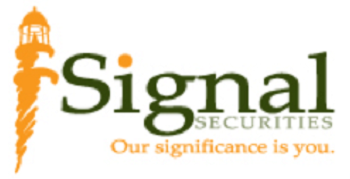Signal Securities, Inc.
Signal Securities is a registered investment advisor (RIA) based in Fort Worth, Texas. The firm, which has more than 1,800 accounts, works with individual clients and provides financial planning and portfolio management services. However, these services are not available to clients directly, but rather are only accessible through a network of independent advisors that Signal Securities works with.
As a fee-based firm, certain advisors at Signal Securities can receive third-party commissions from things like insurance sales. A fee-only firm, on the other hand, receives all of its compensation from client-paid fees.
Signal Securities Background
Signal Securities can trace its roots back to 1984 when CEO Jerry Singleton founded the firm as a broker-dealer. Since then, the firm has undergone a few changes, most notably becoming an SEC-registered RIA. The firm still serves as a broker-dealer, though, as well as providing business support to independent advisors.
Singleton is also the firm's principal owner. Many of the independent advisors in the firm's network boast advisory designations, such as certified financial planner (CFP).
Signal Securities Client Types and Minimum Account Sizes
Signal Securities only lists non-high-net-worth individual clients on its Form ADV. However, the firm and its network of independent advisors can also work with high-net-worth individuals, pension and profit-sharing plans, charitable organizations and businesses.
Account minimums at Signal vary based on the portfolio model the client uses. The firm's Private Client Asset Management Model has a $100,000 minimum, whereas all other models have a $25,000 minimum.
Services Offered by Signal Securities
Signal Securities doesn't work directly with clients. Instead, it provides business support, such as model portfolios, to its network of independent advisors. Through these advisors, client can access a number of investment models, such as:
- Asset Allocation Model
- Private Client Asset Management Model
- Separately managed accounts (SMAs)
- Equity strategy
- Fixed-income strategy
- Exchange-traded fund (ETF) strategy
- Fixed-income ladder strategy
- Institutional Intelligent Portfolios through Charles Schwab
- 401k Optimizer
Advisors may also provide flat-fee financial planning services. These services may entail a wide variety of different financial planning topics, like retirement planning and wealth management.
Signal Securities Investment Philosophy
Signal Securities' network of independent advisory firms works with their clients to provide investment management services that utilize specific strategies and philosophies that work for them. The details of each client-advisor relationship depends on the goals of the client, as well as their risk tolerance, time horizon and more. Overall, advisors tend to pursue strategies that minmizing risk through asset diversification.
While specific strategies and investment tactics may vary from advisor to advisor, they generally focus on choosing investments that aid a client in reaching their short- and long-term goals. The result is broadly diversified portfolios that help drive sustainable and risk-protected growth, though certain clients may be able to take on more risk.
Fees Under Signal Securities
Signal Securities' investment management fee schedules are determined based on a percentage of each client's total assets under management (AUM). Fee schedules vary based on the program or portfolio used by the client. In the case of the Private Client Asset Management Model, limited partnerships are charged a 3% fee on all balances, while other clients follow the fee schedule below:
| Private Client Asset Management Model Fee Schedule | |
| Portfolio Value | Base Fee |
| $100K - $500K | 1.75% |
| $500K - $1MM | 1.50% |
| More than $1MM | 1.25% |
| Asset Allocation Model Fee Schedule | |
| Portfolio Value | Base Fee |
| $25K - $100K | 2.00% |
| $100K - $250K | 1.75% |
| $250K - $500K | 1.50% |
| $500K - $1MM | 1.00% |
| More than $1MM | 0.75% |
The annual fee for the 401k Optimizer program is 1% on all balances. Annual fees for SMA programs vary significantly between a range of 0.25% to 1%. Financial planning services typically include an hourly fee at a maximum rate of $250 per hour.
What to Watch Out For
Signal Securities has a single regulatory disclosure listed on its Form ADV. This disclosure is the result of an alleged 2007 rules violation by the firm in relation to monthly reserve computations and deposits. As a result, the firm paid a $15,000 fine and submitted to censure.
Signal and its network of advisor is considered to be "fee-based," as some of these advisors can receive commissions for insurance or securities transactions. Despite this, the firm is legally bound by fiduciary duty and is therefore obligated to act in the best interests of clients.
Opening an Account With Signal Securities
If you're interested in working with one of Signal's independent advisors, you can contact one of them directly or call the firm at (817) 877-4256.
All information is accurate as of the writing of this review.
Tips for Finding a Financial Advisor
- Working with a financial advisor can be a great way to make sure that you're fully prepared for your retirement. SmartAsset’s free tool matches you with up to three financial advisors who serve your area, and you can interview your advisor matches at no cost to decide which one is right for you. If you’re ready to find an advisor who can help you achieve your financial goals, get started now.
- Whether you're a seasoned investor or just got started recently, it pays to know what you're doing. SmartAsset has you covered with our asset allocation calculator. Use this to figure out what your portfolio composition should look like.

